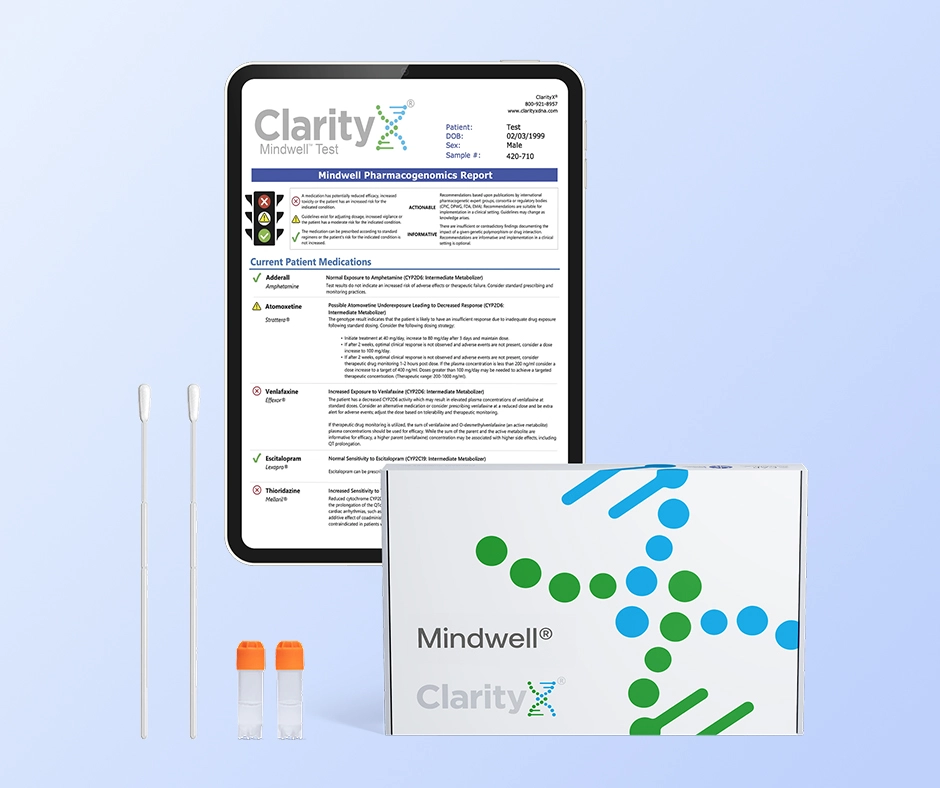Key Highlights
- Vicodin and Percocet are both prescription opioids commonly used for pain relief, especially for chronic or severe pain.
- Both medications contain a combination of an analgesic (hydrocodone in Vicodin, oxycodone in Percocet, and acetaminophen in both, which enhances the pain-relieving effects.
- While both medications are effective for pain relief, the choice between Vicodin and Percocet depends on the individual's specific needs and preferences, as well as their medical history and potential for side effects.
- Both medications have similar side effects, including nausea, vomiting, dizziness, constipation, and the risk of opioid addiction or dependence. Some studies have suggested hydrocodone (found in Vicodin) may be more likely to cause constipation.
- It is important to follow the prescribed dosage and duration of treatment for either medication to minimize the risk of side effects and to consult with a healthcare professional for personalized advice.
Introduction
Opioid medications are widely used for the management of moderate to severe pain. Two commonly prescribed opioids are Vicodin and Percocet. These medications belong to a class of drugs called prescription opioids, which are highly effective in relieving pain but also carry the risk of side effects and addiction.
Chronic pain can have a significant impact on a person's quality of life, making it difficult to carry out daily activities and affecting their physical and mental well-being. Prescription opioids like Vicodin and Percocet provide relief by binding to opioid receptors in the nervous system, reducing the transmission of pain signals.
However, it is important to recognize that opioids are powerful drugs that should be used under the supervision of a healthcare professional. They are typically prescribed for short-term use or for the management of severe pain that is not well-controlled with other medications.
This blog will explore the similarities and differences between Vicodin and Percocet, including their key ingredients, efficacy in pain management, and potential side effects. It is important to note that the choice between these medications should be made in consultation with a healthcare professional, carefully considering individual needs and medical history.
Understanding Vicodin and Percocet
To understand the differences between Vicodin and Percocet, it is important to first understand how opioids work in the body. Opioids act on opioid receptors in the nervous system, which are responsible for transmitting pain signals.
Vicodin and Percocet are both classified as opioid analgesics, meaning they provide pain relief by binding to these receptors. However, they contain different active ingredients. Vicodin contains hydrocodone, while Percocet contains oxycodone. These opioids work in a similar way to reduce pain signals in the brain and provide relief. Both medications also contain acetaminophen (Tylenol), which provides additional support for pain management.
It's worth noting that there are different types of opioids, including natural opioids derived from the poppy plant (like morphine and codeine), semi-synthetic opioids (such as hydrocodone and oxycodone), and synthetic opioids (like fentanyl). Vicodin and Percocet fall into the category of semi-synthetic opioids.
What is Vicodin?
Vicodin (also known as Norco) is a prescription medication that combines two active ingredients: hydrocodone, a strong narcotic pain reliever, and acetaminophen. Hydrocodone is an opioid analgesic, which means it provides pain relief by binding to opioid receptors in the brain and spinal cord. Acetaminophen, on the other hand, is a non-opioid pain reliever that helps enhance the effects of hydrocodone.
With the ongoing concerns related to deadly overdoses, doctors are increasingly turning to alternative medications and treatment options.
Vicodin has become more commonly prescribed for the management of more severe pain, such as that caused by injuries, dental procedures, or surgeries. In these cases, it’s often used for short period of time. It can also be used for the treatment of chronic pain when other non-opioid pain medications are not effective.
It's important to follow the prescribed dosage and duration of treatment for Vicodin, as misuse or excessive use can lead to serious side effects, including liver damage from acetaminophen. It is classified as a Schedule II controlled substance due to its potential for abuse and addiction.
What is Percocet?
Percocet is another prescription medication used for the management of moderate to severe pain. It contains two active ingredients: oxycodone and acetaminophen. Oxycodone, also known as oxy, is an opioid analgesic, and provides pain relief by binding to opioid receptors in the brain and spinal cord. Acetaminophen is a non-opioid pain reliever that enhances the effects of oxycodone, making Percocet a highly effective painkiller.
Percocet is prescribed to relieve pain following surgeries, dental procedures, or injuries. It can also be used for the treatment of chronic pain when other non-opioid pain medications are not effective.
As with Vicodin, it is important to take Percocet exactly as prescribed and not exceed the recommended dosage. Misuse or excessive use can lead to serious side effects, including liver damage from acetaminophen. Percocet is classified as a Schedule II controlled substance due to its potential for abuse and addiction.
Key Ingredients and How They Work
Both Vicodin and Percocet contain a combination of opioids and acetaminophen. The opioids in these medications, hydrocodone in Vicodin and oxycodone in Percocet, work by binding to opioid receptors in the brain and spinal cord. This binding reduces the transmission of pain signals, leading to pain relief.
Acetaminophen, a non-opioid pain reliever, is added to enhance the effects of the opioids. It works by inhibiting certain chemicals in the body that contribute to pain and fever.
The combination of opioids and acetaminophen in both medications allows for more effective pain relief than either ingredient alone. This combination approach can relieve moderate to severe pain, but it also increases the risk of potential side effects. They should be used under the careful guidance of a healthcare professional.
Active Ingredients in Vicodin
Vicodin contains two active ingredients: hydrocodone and acetaminophen. Hydrocodone is an opioid analgesic that works by binding to opioid receptors in the brain and spinal cord, reducing the transmission of pain signals. Acetaminophen, a non-opioid pain reliever, is added to enhance the pain-relieving effects of hydrocodone.
Hydrocodone is a semi-synthetic opioid derived from codeine, a natural opioid found in the opium poppy plant. It is classified as a Schedule II controlled substance due to its potential for abuse and addiction. Acetaminophen (Tylenol), on the other hand, is not an opioid and does not have addictive properties.
When taken in the prescribed dosage and duration, Vicodin, a combination of hydrocodone and acetaminophen, can relieve pain but can also contribute to drowsiness, constipation. Consistent use can result in a chemical dependency. .
It is important to follow the prescribed dosage and duration of treatment for Vicodin to minimize the risk of side effects, including liver damage from acetaminophen. Opiates, including hydrocodone and other active ingredients found in Vicodin, are highly addictive and can lead to serious health consequences when misused or abused.
Active Ingredients in Percocet
Percocet contains two active ingredients: oxycodone and acetaminophen. Oxycodone is an opioid analgesic that works by binding to opioid receptors in the brain and spinal cord, reducing the transmission of pain signals. Acetaminophen, a non-opioid pain reliever, is added to enhance the pain-relieving effects of oxycodone.
Oxycodone is a semi-synthetic opioid derived from thebaine, a natural opioid found in the poppy plant. Like hydrocodone, it is classified as a Schedule II controlled substance due to its potential for abuse and addiction. Acetaminophen, on the other hand, is not an opioid and does not have addictive properties.
It is important to take Percocet as prescribed and not exceed the recommended dosage. Misuse or excessive use can lead to serious side effects, including liver damage from acetaminophen. Percocet should only be used under the guidance of a healthcare professional.
Efficacy in Pain Management
Both Vicodin and Percocet are highly effective in managing pain, especially for chronic or severe pain that is not well-controlled with other medications. The combination of an opioid analgesic and acetaminophen in these medications provides a synergistic effect, enhancing the pain-relieving properties.
Vicodin is often prescribed for a wide range of pain conditions, including back pain and breakthrough pain. It can provide significant relief and improve daily functioning for individuals with chronic pain.
Similarly, Percocet is commonly prescribed for severe pain, such as that caused by surgeries or injuries. It can provide rapid relief and allow individuals to manage their pain more effectively.
How Effective is Vicodin for Pain Relief?
Vicodin is known for its effectiveness in relieving various types of pain. It is often prescribed for conditions such as back pain, where other pain medications may not provide sufficient relief. The combination of hydrocodone and acetaminophen in Vicodin allows for a more comprehensive approach to pain management.
In cases of breakthrough pain, which refers to sudden and intense episodes of pain that can occur despite ongoing pain medication, Vicodin can be used to promote rapid relief. Its opioid component helps to block the pain signals in the brain, providing much-needed relief for individuals with chronic pain conditions.
It is important to note that Vicodin should be used as directed by a healthcare professional and not exceed the recommended dosage or duration of treatment.
How Effective is Percocet for Pain Relief?
Percocet is highly effective in providing relief from severe pain, making it a commonly prescribed medication for post-surgical pain or acute injuries. Its combination of oxycodone and acetaminophen allows for more comprehensive pain relief than either ingredient alone. While some ongoing discussion remains, oxycodone and hydrocodone are generally considered roughly equally potent on a mg-for-mg basis.
For individuals experiencing severe pain, such as that caused by surgeries or injuries, Percocet can provide rapid and significant relief. The opioid component of Percocet helps to block the pain signals in the brain, allowing individuals to manage their pain more effectively.
It is important to use Percocet as prescribed and not exceed the recommended dosage or duration of treatment. Regular communication with a healthcare professional is essential to ensure that pain is adequately managed and to monitor for any potential side effects or concerns.
Side Effects and Safety Concerns
Like all medications, Vicodin and Percocet have potential side effects and safety concerns. The most common side effects include nausea, vomiting, dizziness, constipation, and drowsiness.
It is important to note that prolonged use or misuse of opioids can lead to physical dependence and withdrawal symptoms when the medication is discontinued. Withdrawal symptoms may include restlessness, anxiety, nausea, and muscle aches, as well as increased heart rate and blood pressure. To minimize the risk of withdrawal symptoms and ensure long term safety, it is important to follow the prescribed dosage and duration of treatment, as well as consider a detox program under medical supervision for opioid detox.
Additionally, opioids carry a risk of addiction, especially when used inappropriately or for prolonged periods. It is crucial to use Vicodin and Percocet under the guidance of a healthcare professional and to report any concerns or side effects promptly.
Common Side Effects of Vicodin
Common side effects of Vicodin include nausea, vomiting, dizziness, constipation, and drowsiness.
Nausea and vomiting are common side effects of opioids and can often be managed with anti-nausea medications.
Dizziness is also a common side effect and can affect balance and coordination. It is important to be cautious when performing tasks that require alertness, such as driving or operating machinery. Notifying your healthcare provider is critical if you feel you may fall.
Constipation is a common side effect of opioids and can be managed with dietary modifications, increased fluid intake, and over-the-counter laxatives if necessary. Compared with Percocet, Vicodin may be more likely to contribute to constipation.
Drowsiness is another side effect that may interfere with daily activities, and it is important to avoid alcohol or other sedating substances while taking Vicodin.
Opioids like Vicodin can cause respiratory depression (shallow, labored breathing). This is a medical emergency and is the reason why overdose is deadly. Using Vicodin with other central nervous system depressants like alcohol or medications like benzodiazepines increases the risk of respiratory depression and potentially deadly overdose.
Common Side Effects of Percocet
Common side effects of Percocet are similar to those of Vicodin and include nausea, vomiting, dizziness, constipation, and drowsiness.
Nausea and vomiting are common side effects of opioids and can often be managed with anti-nausea medications if needed. Dizziness is another common side effect and can affect balance and coordination. It is important to be cautious when performing tasks that require alertness, such as driving or operating machinery. If you feel as though you may fall, notify your healthcare provider.
Constipation is a common side effect of opioids and can be managed with dietary modifications, increased fluid intake, and over-the-counter laxatives if necessary. Drowsiness is another side effect that may interfere with daily activities, and it is important to avoid alcohol or other sedating substances while taking Percocet.
Like Vicodin, Percocet can cause respiratory depression. It’s critical to discuss your medications and any other substances you use with each of your providers to help ensure the risk of causing additive central nervous system depression and difficulty breathing is minimized.
Understanding the Risk of Addiction
Both Vicodin and Percocet carry a risk of addiction, especially when used inappropriately or for long periods. Opioids can cause physical dependence, meaning the body becomes accustomed to the presence of the medication and requires it to function normally.
Dependency on opioids can lead to withdrawal symptoms when the medication is discontinued. These symptoms may include restlessness, anxiety, muscle aches, and nausea. To minimize the risk of addiction and withdrawal, it is important to follow the prescribed dosage and duration of treatment.
It is crucial to use Vicodin and Percocet under a healthcare professional's guidance and promptly report any concerns or side effects. Regular communication with a healthcare professional can help monitor for signs of addiction or dependence and provide appropriate support or interventions if needed.
Patient Experiences and Doctor Recommendations
Patient experiences and doctor recommendations play a significant role in understanding Vicodin and Percocet effectiveness and potential risks. Real-life experiences shared by individuals who have used these medications can provide valuable insights into their efficacy and side effects.
Additionally, doctors' views and recommendations on prescribing Vicodin or Percocet help guide patients in making informed decisions about their pain management options.
Real-life Experiences with Vicodin and Percocet
Real-life experiences with Vicodin and Percocet vary among individuals. Some patients report effective pain relief, allowing them to manage their chronic pain and improve their quality of life. However, others may experience side effects such as drowsiness, dizziness, nausea, or inadvertently developing dependency over time.
It is important to note that individual responses to medications can differ, and what works for one person may not work for another. Consulting with a doctor and discussing any concerns or side effects experienced with these medications is crucial for adjusting the dosage or exploring alternative pain management options.
Doctors' Views on Prescribing Vicodin vs. Percocet
Doctors play a crucial role in determining whether Vicodin or Percocet is a suitable choice for pain management. Their recommendations are based on various factors, including the severity of pain, medical history, potential interactions with other medications, and the risk of addiction.
Ultimately, doctors prioritize patient safety and well-being when making prescribing decisions. Consulting with a healthcare professional and discussing individual needs and concerns is essential for determining the most appropriate medication for pain relief.
Regulatory Considerations
When considering Vicodin or Percocet for pain management, it is important to be aware of the regulations associated with these medications. Prescription regulations have been put in place to address the growing concern of opioid addiction and misuse. These involve restrictions on the amount of medication that can be prescribed, mandatory consultations with healthcare professionals, and monitoring programs to track opioid prescriptions. Understanding and adhering to these regulations is crucial to ensure safe and responsible use of Vicodin or Percocet.
Prescription Regulations for Vicodin
The Centers for Disease Control and Prevention (CDC) has established prescription guidelines for Vicodin and other opioids to address the increasing rates of opioid addiction and overdose. These guidelines recommend that healthcare professionals exercise caution when prescribing Vicodin and other opioids, such as OxyContin, and consider non-opioid alternatives for pain management whenever possible.
The guidelines also emphasize the importance of closely monitoring patients who are prescribed Vicodin and naloxone, a medication that can reverse the effects of opioid overdose, including heroin, to minimize the risk of addiction and overdose. Healthcare professionals are encouraged to evaluate the benefits and risks of Vicodin and naloxone carefully and to engage in open and honest conversations with patients regarding pain management options.
Prescription Regulations for Percocet
Similar to Vicodin, Percocet is subject to prescription regulations set forth by the CDC. These regulations aim to prevent the misuse and overprescribing of opioids, including Percocet. The CDC guidelines recommend that healthcare professionals exercise caution when prescribing Percocet and consider alternative treatments for pain management whenever possible.
It is important for healthcare professionals to evaluate the individual needs of each patient and assess the risks and benefits of prescribing Percocet. Regular monitoring and open communication with patients are crucial to ensure responsible use and minimize the potential for addiction and other adverse effects.
When considering treatment options your genetics can also play a vital role in determining which medications will be best suited for you. A simple test can help reduce the trial and error process associated with finding the right medication. Find out more by visiting www.clarityxdna.com
Conclusion
In conclusion, understanding the differences between Vicodin and Percocet is crucial for effective pain management. Both medications have unique benefits and risks, so it's essential to consult your healthcare provider to determine the best option for your specific needs. Be aware of the active ingredients, efficacy in pain relief, potential side effects, and safety concerns associated with each medication. Patient experiences and doctor recommendations can also provide valuable insights. Always follow regulatory guidelines when using these medications. Your healthcare providers are your best resource for individualized recommendations for the best treatment options for your needs. .
Frequently Asked Questions
Can Vicodin and Percocet be taken together?
While some opioids are used together under certain circumstances, it’s unlikely that Vicodin and Percocet would be recommended together. In general, a longer-acting opioid may be prescribed for baseline chronic pain management, and one short-acting pain reliever may be available for breakthrough pain. Both of these medications are short-acting. It is important to consult with a healthcare professional before combining any medications to ensure their safety and effectiveness.
How do I know if Vicodin or Percocet is better for my pain?
Determining whether Vicodin or Percocet is better for your pain requires a consultation with a healthcare professional. Factors such as the severity of pain, medical history, and individual response to medication play a significant role in deciding the most suitable option. A healthcare professional can assess your specific needs and provide personalized recommendations for effective pain management.
Resources:
https://www.drugabuse.gov/publications/drugfacts/prescription-opioids
https://onlinelibrary.wiley.com/doi/epdf/10.1197/j.aem.2004.12.005
https://dailymed.nlm.nih.gov/dailymed/drugInfo.cfm?setid=62be4147-6a72-49e5-9338-10887c65a93a
https://dailymed.nlm.nih.gov/dailymed/drugInfo.cfm?setid=4dd36cf5-8f73-404a-8b1d-3bd53bd90c25
https://pubmed.ncbi.nlm.nih.gov/15805317/
https://pubmed.ncbi.nlm.nih.gov/26479162/
https://wwwnc.cdc.gov/travel/yellowbook/2024/additional-considerations/substance-use
https://www.dea.gov/drug-information/drug-scheduling





